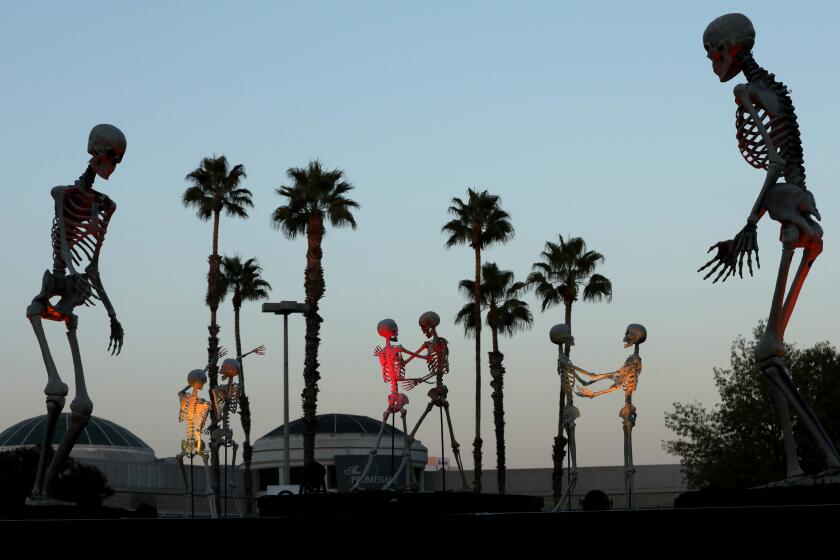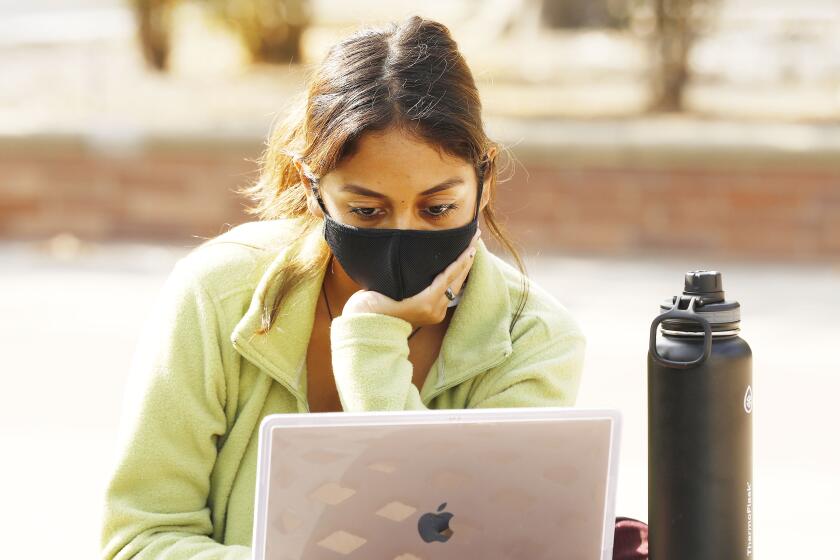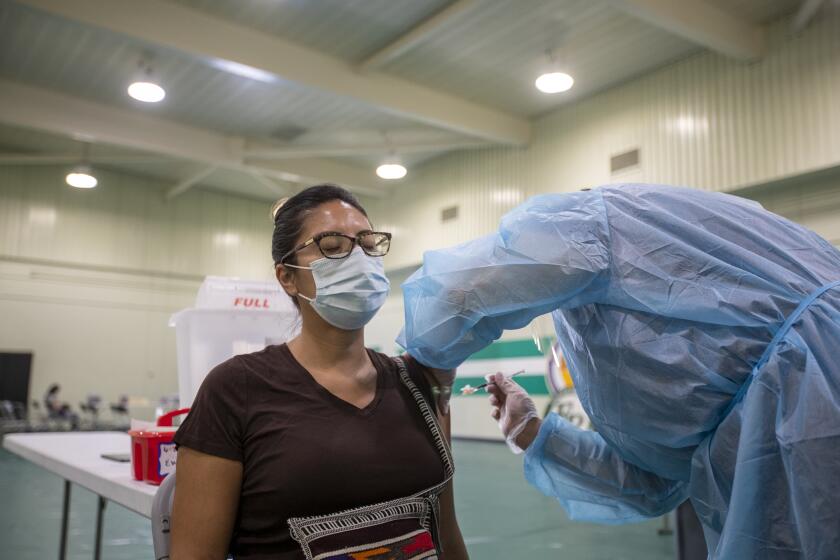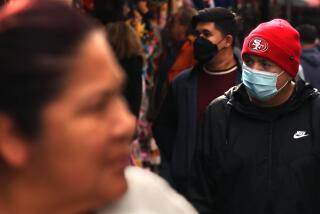70,000 Californians have died from COVID-19
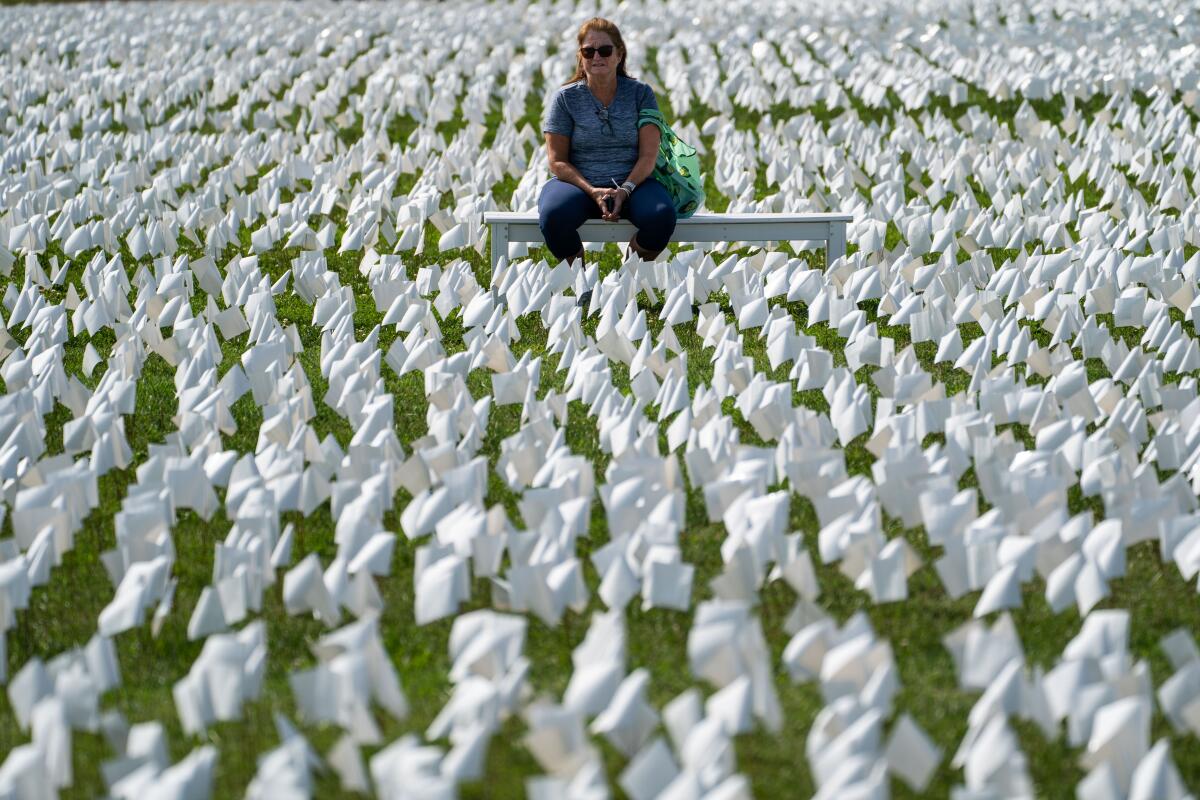
- Share via
COVID-19 has now killed 70,000 Californians, illustrating the pandemic’s still-deadly consequences even as its latest wave recedes.
While that overall death toll is the highest in the nation, other large states have seen cumulative death rates over the course of the pandemic that far surpass California’s. The Golden State’s cumulative pandemic fatality rate — 178.5 deaths for every 100,000 residents — is the 35th-highest. By comparison, rates are 284.4 in New York, 278.2 in Florida, 240.5 in Texas and 235 in Pennsylvania, according to data compiled by The Times.
Nonetheless, the scale of California’s loss is staggering — equivalent to emptying an entire mid-sized city such as Palo Alto, San Clemente, Camarillo or Lynwood.
“It’s heartbreaking to know that we still have so many premature and largely preventable deaths each week as a result of COVID,” Los Angeles County Public Health Director Barbara Ferrer said during a recent briefing.
This Halloween seems set to more closely resemble pre-pandemic normal, with even Dr. Anthony Fauci saying outdoor trick-or-treating is safe.
Since June 20, the start of summer, the coronavirus has killed roughly 7,000 Californians. As of Thursday, the overall death toll in the state is 70,010.
Though the statewide numbers of new infections and COVID-19 hospitalizations have been steadily falling for weeks, the daily death counts have remained high.
Over the last week in California, an average of 97 people have died from the disease every day, Times data show. That’s down about 9% from two weeks ago, even though the number of new cases being reported day over day has tumbled by nearly 30% during that same time frame.
The statewide average is similar to the daily number of COVID-19 deaths following last year’s summer surge — long before vaccines were widely available, but during a time when officials shut down or severely limited business operations and restricted access to other public spaces in hopes of curbing the spread.
The nation is also confronting a strain of the coronavirus — the Delta variant — that is far more contagious than any that circulated last year.
Although California has the benefit of plentiful vaccines, inoculation rates are still lower than what’s necessary to achieve herd immunity, a high enough threshold to interrupt widespread transmission of the virus.
“More deaths and COVID transmission could have been prevented if we’d been just a little bit more cautious. Until we get more of our younger folks vaccinated, we really need to take precaution — even if our case rates are low,” said Dr. Regina Chinsio-Kwong, an Orange County deputy health officer.
As the number of infections drop, the number of deaths will also eventually fall.
During the height of the Delta wave, California was reporting almost 15,000 new coronavirus cases per day. Most recently, that average has fallen to just about 5,200.
COVID-19 hospitalizations have dropped by half from the summer peak, as California continues to steadily shake off the worst of the Delta surge.
Hospitalizations, too, have plummeted. On Sunday, the daily number of coronavirus-positive patients receiving that level of care statewide dipped below 4,000 for the first time since late July.
But while the current trend lines are promising, officials are quick to stress that progress isn’t inevitable. Last year demonstrated how rapidly early fall optimism can give way to wintertime devastation.
Similar hopes that the worst of the pandemic had passed also faded last spring as the Delta variant swept through the nation.
“We seem to have turned a corner in our fight against COVID. But we’ve turned corners before only to run into oncoming trains,” Dr. Robert Wachter, chair of UC San Francisco’s Department of Medicine, said at a recent campus forum. “Part of the challenge for us relates to the fact that Delta is far better at its job of infecting people than the original virus was. So our future will be determined in part by the answer to this question: Is Delta as bad as it gets?”
Another question, Wachter said, is whether rapid coronavirus testing will become ubiquitous and cheap — which will be essential to easily identify people who are infected and keep them from inadvertently spreading the virus to others.
Employees had faced termination if not fully immunized againt COVID-19 by Oct. 15. But they’ll still need their shots.
The general consensus among officials and experts is that California is poised to weather the fall-and-winter holiday season far better this year because so many residents have been vaccinated against COVID-19.
So far, more than 67% of Californians have gotten at least one dose and 61% are considered fully vaccinated, according to data compiled by The Times.
As California looks forward to Halloween and other fall holidays, health officials and experts are still voicing caution in efforts to protect children who are still too young to get vaccinated. Activities such as trick-or-treating or Halloween parties should be done outdoors and in small groups, as maskless indoor gatherings pose a higher risk of transmission, officials say.
Experts are also hopeful that vaccinations for children ages 5 to 11 will become available sometime in November. But to protect children who haven’t been fully vaccinated by Thanksgiving, officials are urging all family members and friends to get vaccinated.
“Reducing our vulnerability as a community relies on decreasing the numbers of people that are unvaccinated,” Ferrer said. “The greatest increase in protection that we’re going to get is by making sure that everyone has their primary series of vaccines.”
More to Read
Sign up for Essential California
The most important California stories and recommendations in your inbox every morning.
You may occasionally receive promotional content from the Los Angeles Times.
